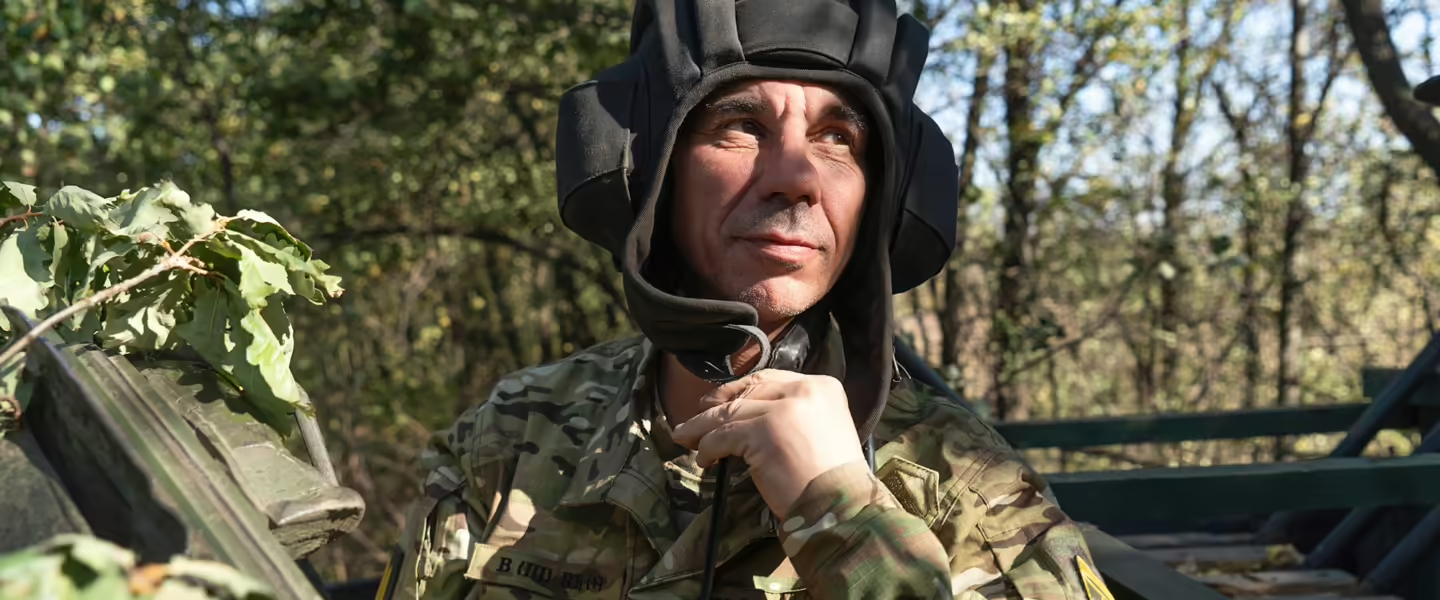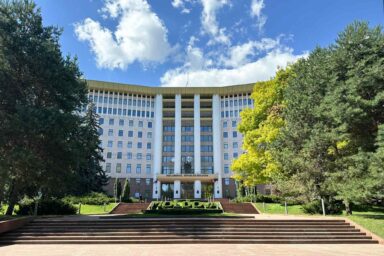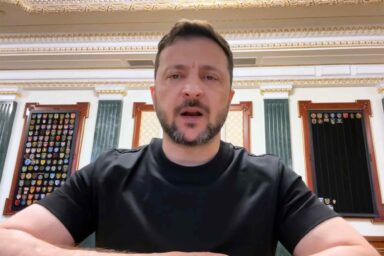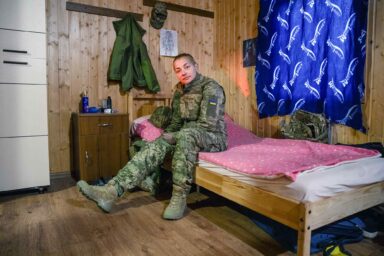Soldiers in Ukraine are fighting to stop the Russian advance while waiting to learn how aid will change following the outcome of the 2024 US elections.
|
Listen To This Story
|
DONETSK OBLAST, Ukraine — A soldier in the yard of an abandoned house on the outskirts of Pokrovsk does his laundry in a tub filled with murky water. He’s with the Ukrainian army’s 15th Brigade, which has just returned from fighting on the Selydove front. A cigarette dangles from his lips. Several others smoke and laugh while playing cards.
At intermittent intervals, the roar of artillery fire tears through the distant sky. Hardly anyone seems to notice. By now, everyone is used to the sound.
A brigade commander, Mikhaïl, in his mid-40s, is getting ready for his next rotation. His uniform is spotless. Originally from Lviv in western Ukraine, he is a career officer. “I’ve been fighting since 2014,” he shrugs.
A few feet away, one of his men toys with an enormous piece of shrapnel. The edges are razor-sharp. “Hey, I want you to see this,” he grins. “It’s from one of those glide bombs that exploded not far from here.”
Glide bombs are ordinary free-fall bombs retrofitted with pop-out wings and satellite navigation gear that steers them toward a precise target. The bombs are cheap and deadly, and they can be launched by enemy aircraft hundreds of miles away. They are nearly undetectable by radar and are infinitely less costly than the Patriot missiles used to shoot them down.
Last March, Ukraine’s president, Volodymyr Zelenskyy, reported that Russia had launched at least 3,000 of the improvised smart bombs.
“They drop two glide bombs a day,” the soldier holding the piece of shrapnel explains. “iIt’s usually around 5 o’clock.”
The only defense against them is to take out the Russian airfields where the planes that launch the bombs are based. But that’s a tricky proposition, given restrictions which the Biden administration — afraid of escalating the war — has imposed on US-provided weapons.
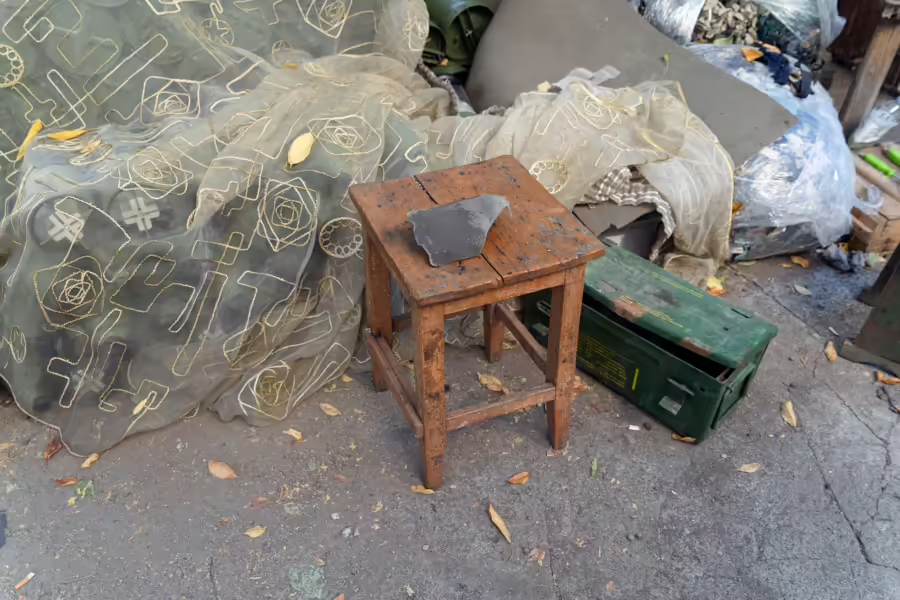
Without paying much attention to his subordinate, Mikhaïl slips a walkie-talkie into the pocket of his field jacket and climbs into a khaki-colored, Japanese 4×4 jeep. We roll through the streets of Pokrovsk, heading southeast toward Mikhaïl’s next post.
After passing through a village, Mikhaïl turns the jeep onto a ochre dirt road. The late October light gives the horizon a surreal tint. “Feels like we’re in a Western, doesn’t it?” Mikhaïl laughs. “Thank goodness for the sunflower fields that remind us we’re still in Ukraine,” he adds, pointing to the fields with row after row of dried sunflowers that flank the road.
A T-70 tank waits in the pale light at the edge of a forest. It’s camouflaged and nearly invisible, hidden under freshly cut branches. Next to it, Vitali, a soldier in his fifties, greets Mikhaïl with a firm nod.
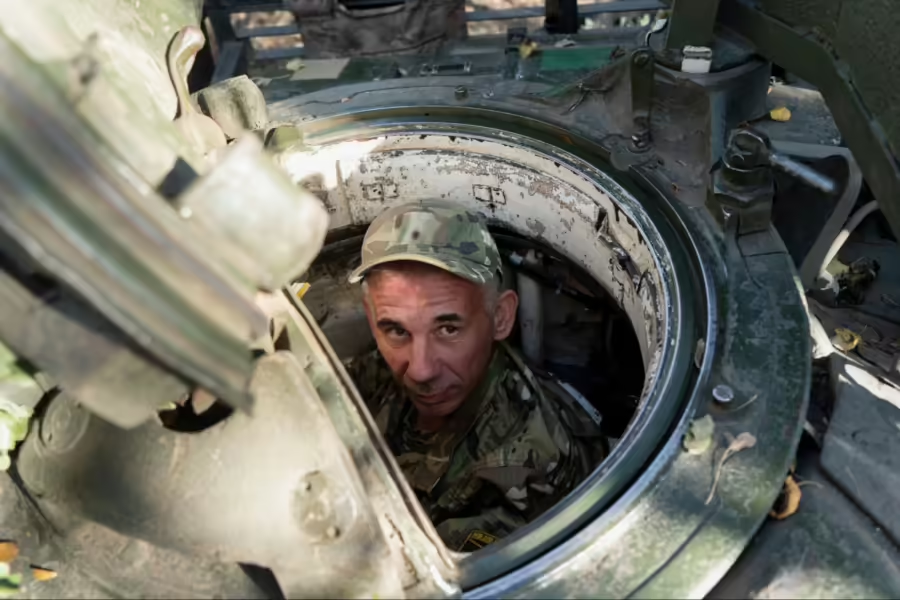
“Here’s our baby,” Mikhaïl explains.
“Our mission is to support the infantry fighting in Selydove.” He points toward the front just a few miles away. In the distance, thick clouds of black smoke rise above the flaming horizon into the sky. “I think we can hold Selydove a little longer,” Mikhaïl says, “but the situation is really tough.”
Since the beginning of the summer, Russian forces advancing in the Donbas have managed to reach the outskirts of Pokrovsk, an important Ukrainian logistical hub for the region.
“If they take Pokrovsk, they’ll only need to capture Kramatorsk and Sloviansk, and they’ll have taken the Donbas. Plus, Pokrovsk is only a hundred kilometers (62 miles) from Dnipro, and we don’t have much defense in between,” a soldier explains.
Selydove, located about 6 miles southeast, is the last line of defense protecting Pokrovsk, now a major objective for Russian forces. Selydove is on the verge of being encircled by Russian troops.
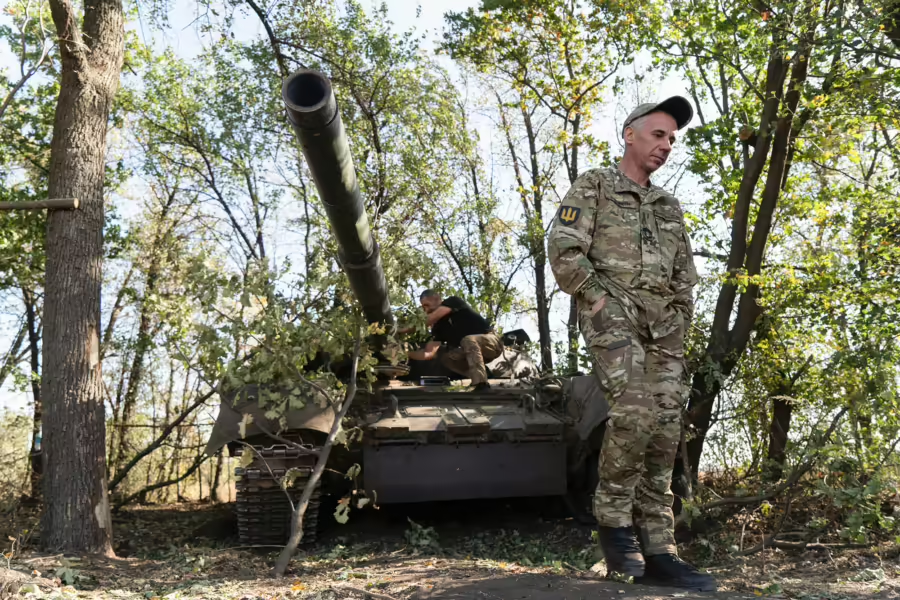
After more than two years of assault, the Kremlin succeeded in capturing the fortress of Vuhledar in early October. Located about 30 miles southeast of Pokrovsk, it had protected the flanks of the Donetsk region.
The men of the 15th Brigade have been ordered to slow the Russian advance.
A Stabilized Front, but For How Long?
Like the men of the 15th Brigade, the soldiers of the 68th Jaeger Brigade have been redeployed from the southern front to Pokrovsk to plug the recent breaches made by the Russian army.
Their unit commander, Taras, 31, sporting a long black beard, waits chatting and laughing next to an ancient Soviet artillery piece. “We mostly conduct counter-battery fire,” he says. The strategy aims at detecting, targeting, and neutralizing enemy artillery and missile units. “Depending on the day, we fire between 20 and 30 shells.”
Taras says that it’s hard to predict how long he will be able to hold. “All I can say,” he adds, “is that the front has been stable for a few days, and we still have a chance to save Pokrovsk.”
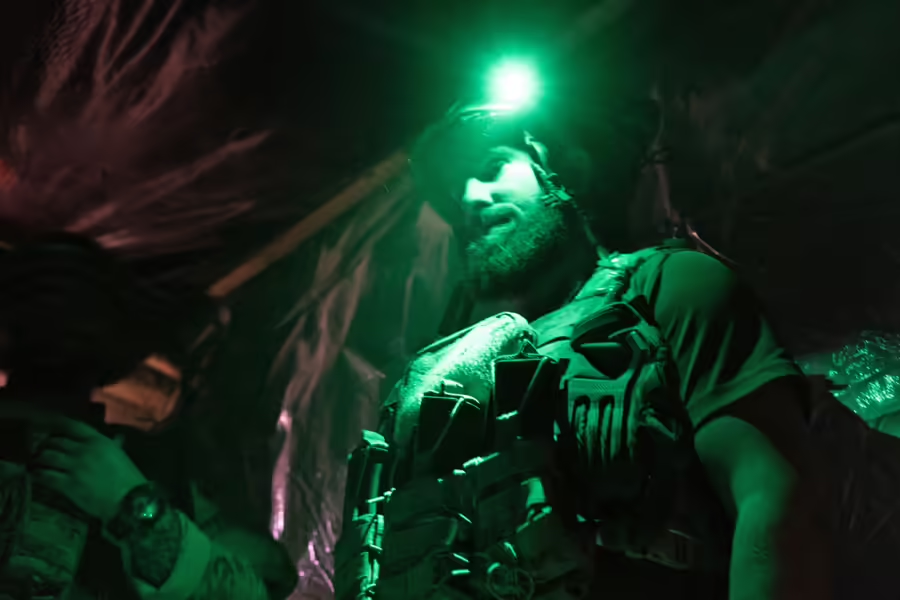
A phone call suddenly interrupts his explanation. Taras’s response is curt. Ending the call, he moves swiftly toward the artillery piece. “Positions!” he shouts.
In seconds, the soldiers of the 68th Brigade, in a perfectly synchronized dance, prepare to fire the artillery piece. “Armata!” (Armed) shouts one soldier. “Ostril!” (Fire) responds Taras. As soon as the word is spoken, an artilleryman pulls the trigger, and the cannon jolts upwards, partially engulfed in flames.
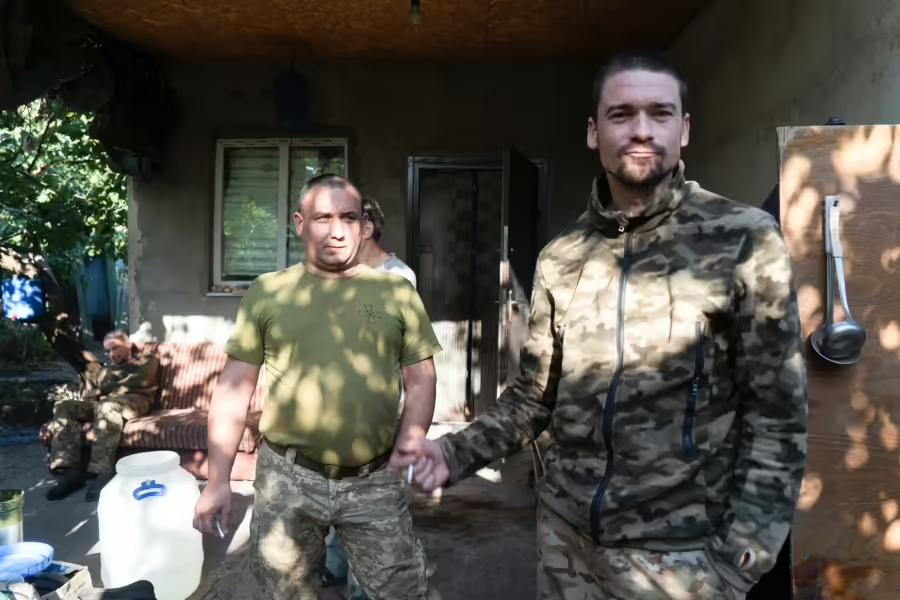
As soon as the shell leaves the gun, everyone immediately dives into the trench. “Russian counter-battery fire,” Oleksandr, one of the gunners, explains. “We wait five minutes. If the Russians don’t fire back, they haven’t spotted us.”
During the first minute, everyone is silent. “It takes 50 seconds for a Russian shell to reach us,” Oleksandr says. After a minute, Philippe, one of the soldiers, lights a cigarette. A few minutes later, another cracks a joke, and everyone bursts into laughter. Dusting themselves off, they climb back out of the trench. “The Russians won’t bother us this time,” Oleksandr says with a wink.
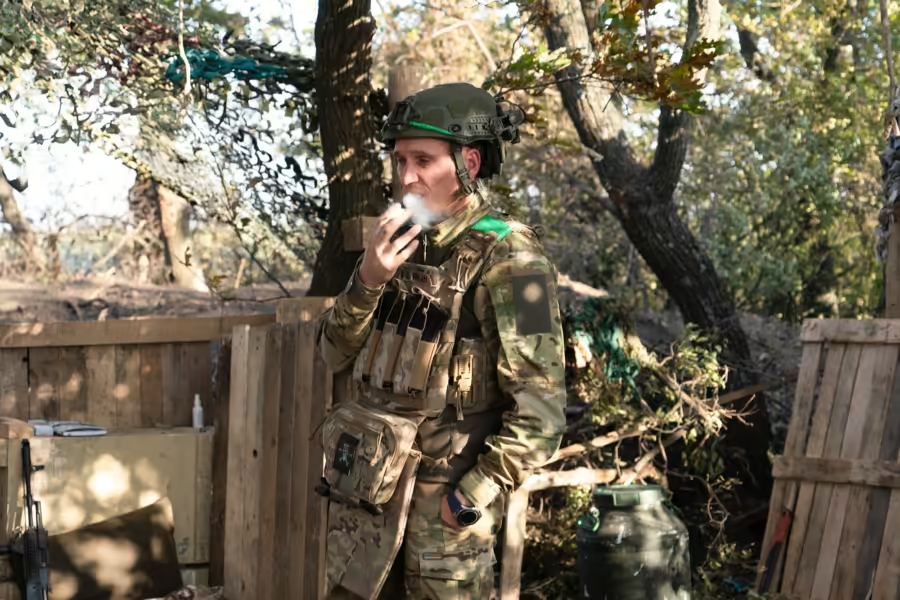
American Elections
With the Russians momentarily no longer a problem, the conversation turns to the Ukrainian’s next biggest concern, the then-upcoming US elections between Kamala Harris, who, like Joe Biden, supports continued aid to Ukraine, and Donald Trump, who has promised to stop all assistance to Kyiv.
Although US aid is unquestionably vital to the continued defense of Ukraine, the soldiers of the 68th Brigade don’t seem overly concerned.
“I don’t have time to follow the news,” says Philippe. “We’re too busy and too tired to think about politics, but I’ve heard that it is better for us if Kamala Harris wins.”
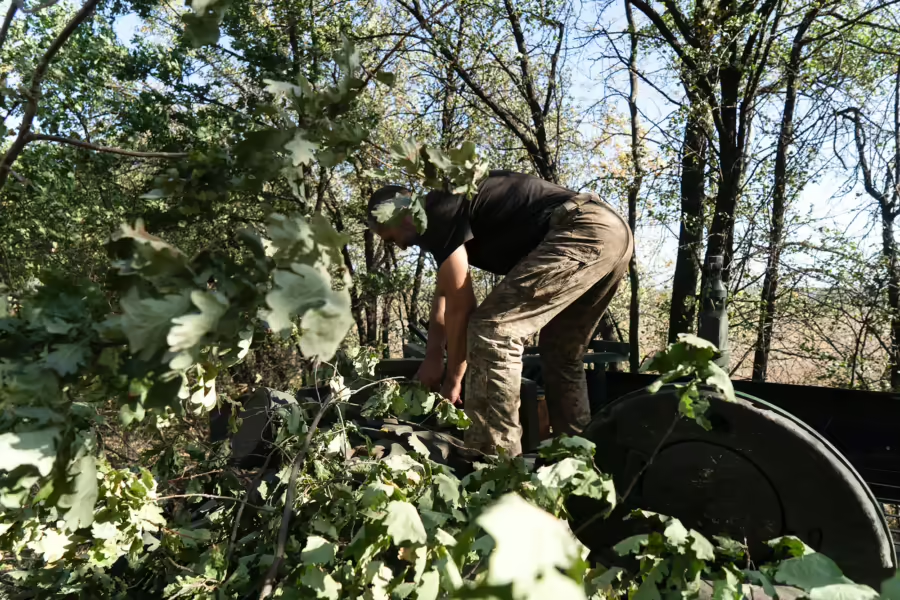
“Of course, we want Kamala to win,” says Vitali, who is 50 and also assigned to the 15th Brigade. “But foreign policy isn’t decided by the president by himself. Congress is also involved. Even if Trump is elected, we know aid will still go through Congress, and many Republicans understand it’s crucial for the US to support Ukraine.”
Dmytro, a former lawyer from Zaporizhzhia, shares the view that the US elections won’t decide everything. “There’s Congress, and also the EU and UK, which provide over half the aid.”
More importantly, he believes the war will continue because Putin won’t stop. “Trump says he’ll end the war in 24 hours, but Putin will keep attacking. He wants all of Donbas, and we won’t give it up. Even if the US stops sending aid, we’ll hold the front and keep inflicting losses on the Russians.”
Dmytro admits, however, retaking lost territories will be much harder without continued US aid. “With or without aid,” he says, “we’ll fight with stones and sticks if we have to.”
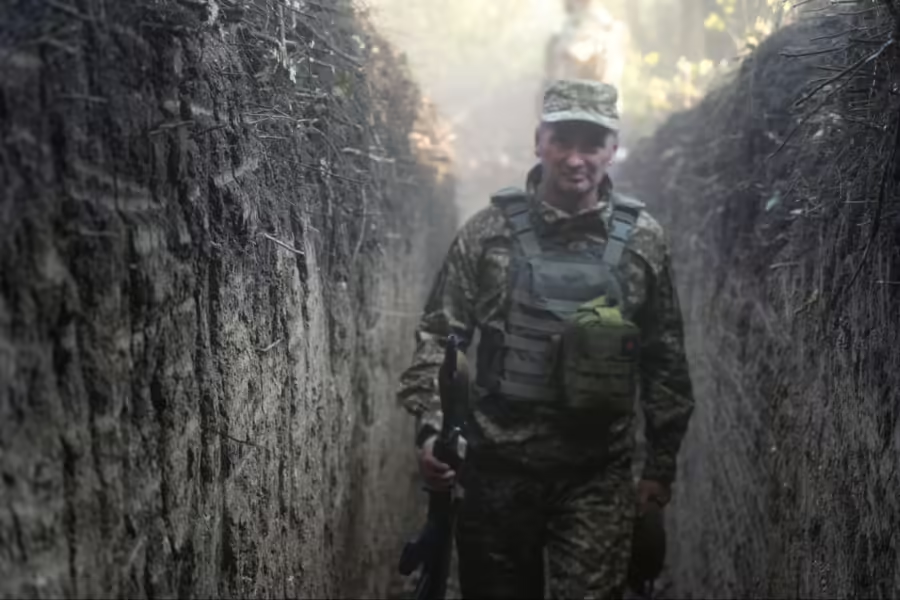
Vitali, from Uzhhorod near Hungary, jokes that politicians make promises they rarely keep. “Once they’re elected, they do whatever they want,” he laughs.
But seriously, he notes that since Republicans blocked US aid and ammunition to Ukraine in 2023, Ukraine no longer bases its war strategy solely on US aid. “At the start of the war, HIMARS and Javelins were essential in pushing back the Russians. But now, we count on our drones, the EU’s ammunition, and our soldiers’ skills. F-16s and ATACMS are great, but we can’t use them to strike deep into Russia,” he adds with a wry smile.
Vitali knows the US elections will be pivotal, but he believes negotiations will follow, no matter the outcome. “Maybe the war will end in six months. If not, we’ll keep fighting.”
Sufficient Equipment for the Winter
Mikhaïl believes that Kyiv will be able to hold the front for a few more months. “It all depends on the Russian advance and our ability to stop them. If we hold Selydove until the rainy season, we can hold Pokrovsk through the winter.”
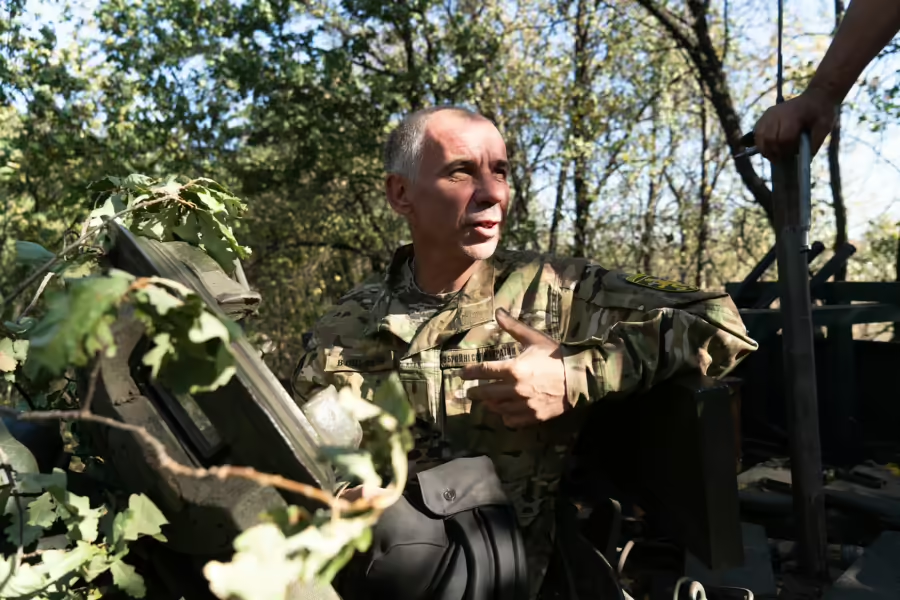
Known as the Rasputitsa, the rainy season, usually between mid-October and early November, dictates the pace of the war in Ukraine. Within days, a front line can turn into a swamp, making the movement of essential vehicles nearly impossible for ongoing operations. One must then wait for the cracked mud to freeze at the start of winter to launch new offensives.
But Mikhaïl seems confident. He explains that their units are better prepared for winter this year and have much more ammunition than they did a few months ago. After facing acute ammunition shortages for most of 2023, Ukrainian forces have in recent months secured enough supplies to defend themselves. This improvement is largely thanks to the initiative of Czech President Petr Pavel, who managed to mobilize nearly a million shells from allies worldwide.
Still, if Russian forces have slowed their advance on Pokrovsk, Mikhaïl explains it’s mainly to level the front and expand their salient (a military term for a battlefield feature that extends into enemy territory) around the city. “They were too deep and were jeopardizing their supply line,” he says.
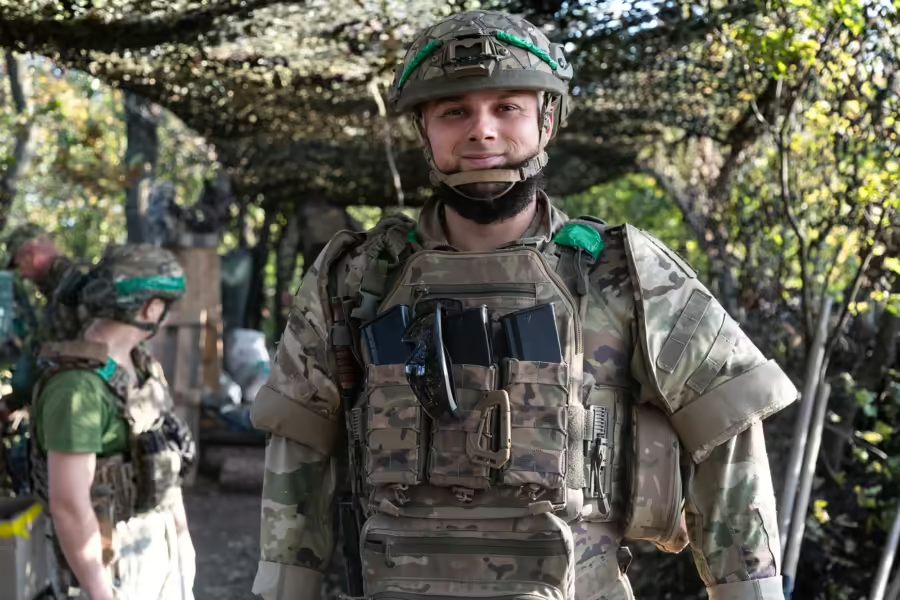
Oleksandr of the 68th Brigade is well aware. “Every village leads to street fighting and significant losses for the Russians, so they try to bypass and suffocate them. It’s more effective for them that way,” he says, referring to the Russian “cauldron” strategy. This military maneuver involves encircling and isolating enemy forces by penetrating deep into their lines, cutting off communication and supply routes, and then closing the pocket around them.
Oleksandr wants to believe the Ukrainian army can hold out. Despite the difficulties the soldiers have faced, he thinks they will be able to keep Pokrovsk.
Yet despite the optimistic talk, the new Donbas defenses reveal the reality of the Russian breakthrough. Every 3 to 6 miles along the road from Pokrovsk to Kramatorsk, passing through Dobropillia, massive excavators dig new trenches, and dragon’s teeth (concrete anti tank obstacles), stacked on large dump trucks, await deployment.
They know it: The Russians are advancing.
